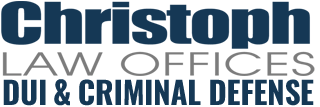“[W]hy are some drugs legal and other drugs illegal today? It’s not based on any scientific assessment of the relative risks of these drugs – but it has everything to do with who is associated with these drugs.”
– Drug Policy Alliance
Did America’s “War on Drugs” work?
Strictly looking at the current epidemic of deaths from opioid abuse, the answer is a solid no. But that’s no surprise. The War on Drugs as we know it today began during the Nixon administration in 1971. “America’s Public Enemy No. 1 in the United States is drug abuse,” President Nixon said. Nixon responded to the threat by expanding government power to act against this supposed enemy, much like President Trump has promised in his rhetoric on declaring a national emergency to combat the opioid crisis.
Make no mistake: One single death from opioid overdose is a problem.
Prevention and Treatment > Jail Time
But for a counterpoint to Nixon’s approach, here is Noam Chomsky on YouTube: “Let’s take a look at the War on Drugs. It’s been declared probably 20 times in the last 20 years or so. Every couple of years it’s declared. […] The most cost effective way of doing it is prevention and treatment.”
Let’s repeat Chomsky’s assertion:
- The most cost effective way of waging a “war on drugs” is prevention and treatment.
Like clockwork, following some state-level decriminalization of marijuana possession in the mid- to late-70s (a taste of what we’re seeing today in the legalization of marijuana for both medical and recreational use across the U.S.), First Lady Nancy Reagan’s “Just Say No” campaign arrived in the 80s to obliterate any rational progress toward combating the harmful aspects of drug use. Those who trumpet the problem of overcrowded prisons today can largely blame the 80s rendition of the War on Drugs.
Perhaps it’s too-little, too-late for the Trump administration to demonize marijuana and the people who use it (not that Attorney General Jeff Sessions hasn’t tried his best to give it another go), but as Chomsky’s clockwork bears out, it is time yet again to wage a war on drugs.
The Writing Is On the Wall
Trump, the so-called law-and-order president, likely doesn’t find prevention and treatment to his taste, perhaps not as much as cracking down on “offenders” and “addicts” with aggressive law enforcement – the people, then, rather than the underlying problem, just as in the Nixon and Reagan administrations.
But in this Trump might find himself in a rather tough spot.
When it comes to drugs, it’s all about the people, as the quote from the Drug Policy Alliance at the top of this post suggests. And the people affected by the opioid crisis will be hard to demonize. In fact, Trump can’t demonize them, at risk of losing the support of his political base. West Virginia, for example, is the hardest hit of any state for opioid abuse, as Politico reports.
When we set our drug policy agenda going forward, it’s worth waking up to the fact that labeling drug users as “criminals” doesn’t work, and that the better method is prevention and treatment, not jail time and the stigma of a criminal record.










